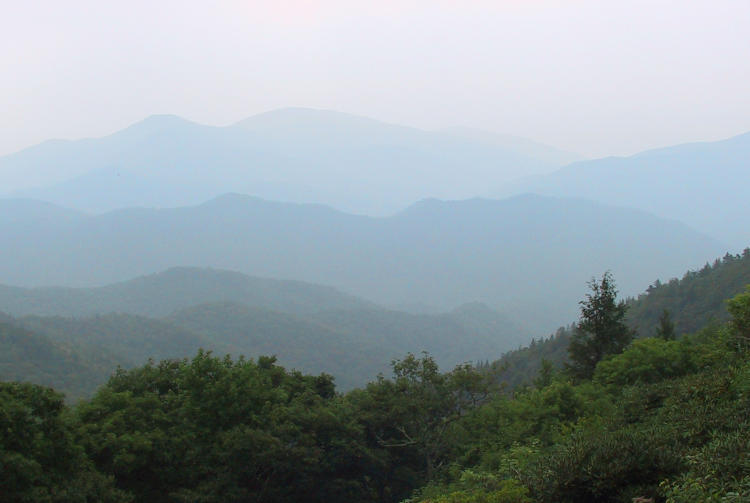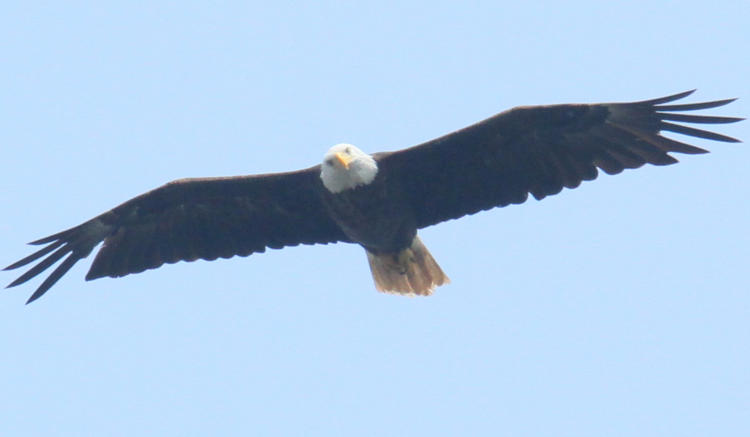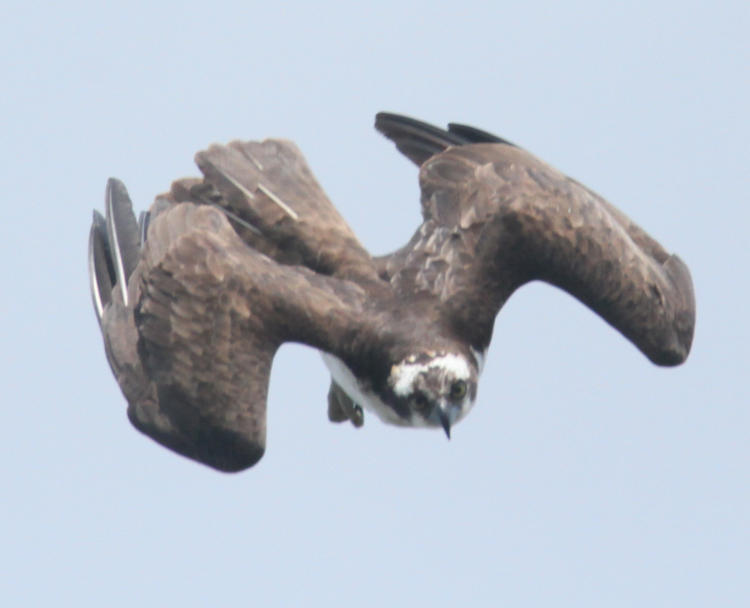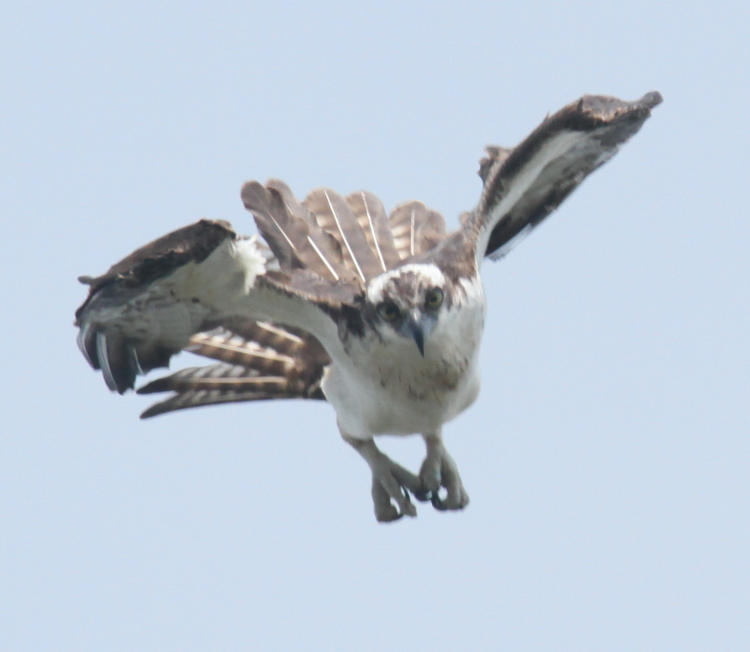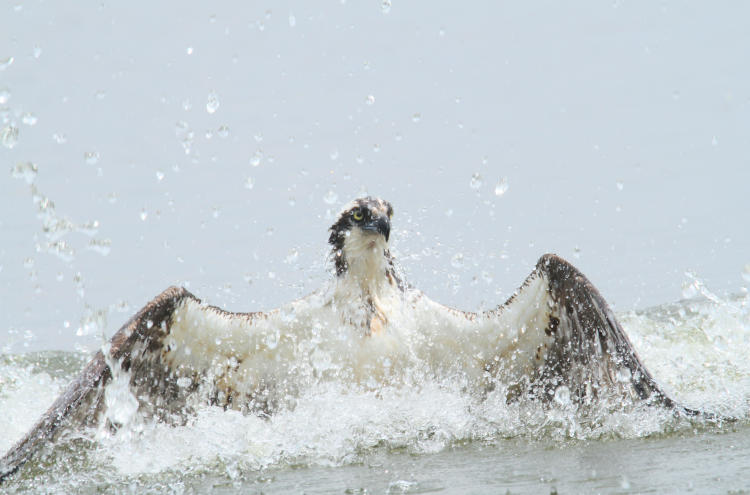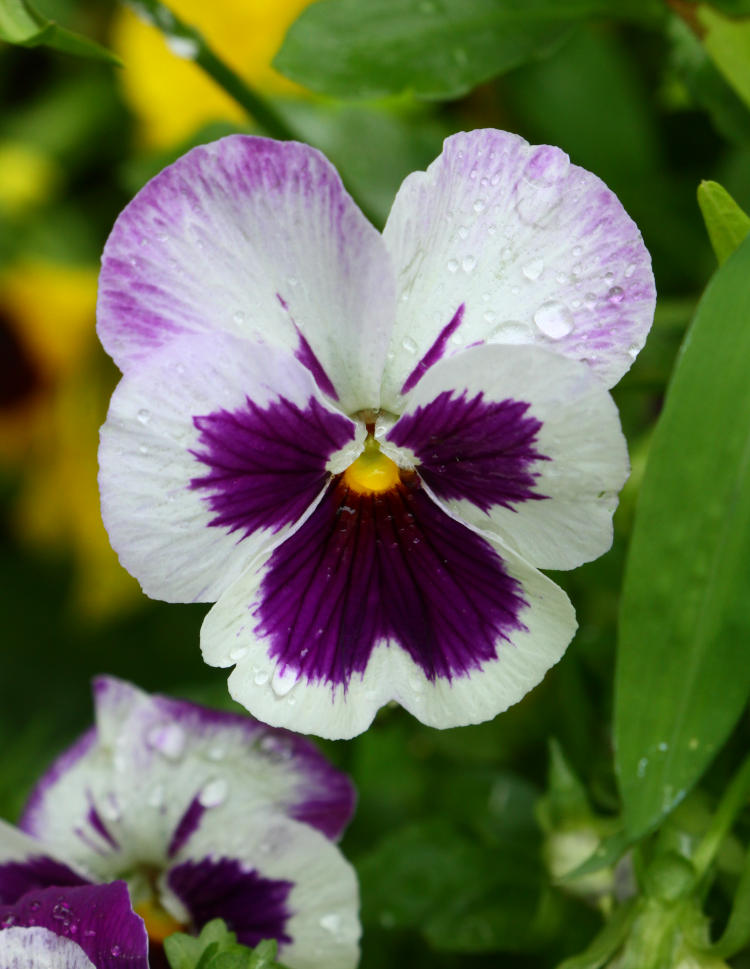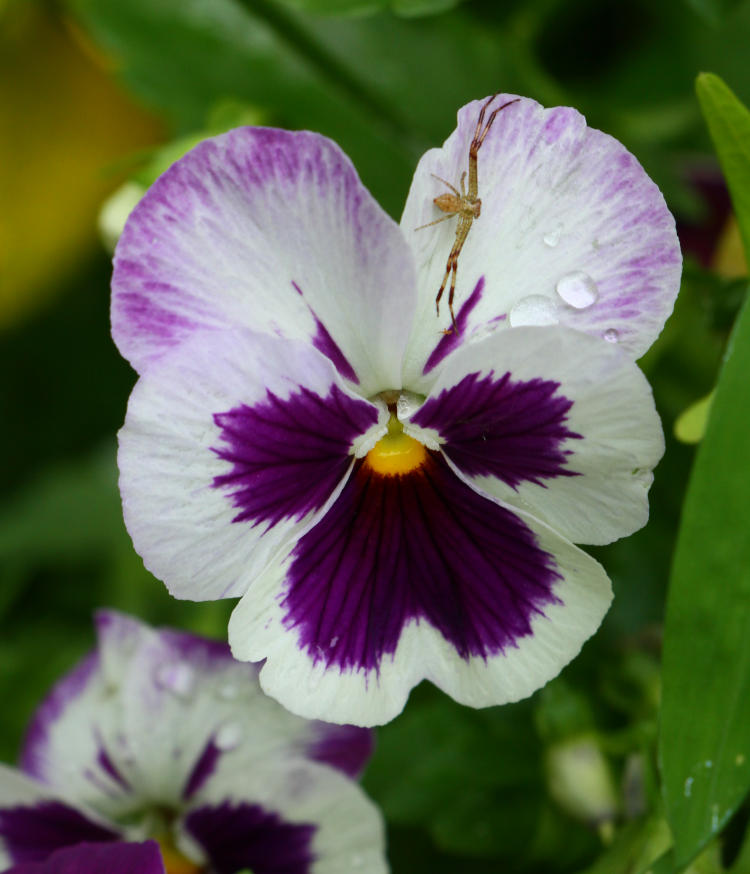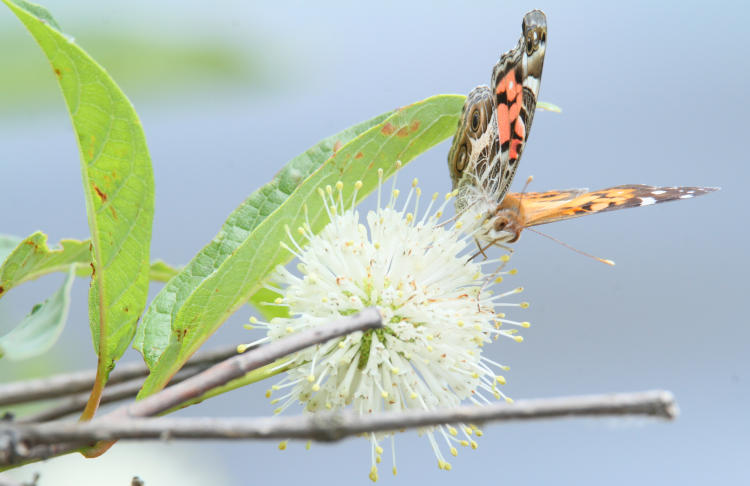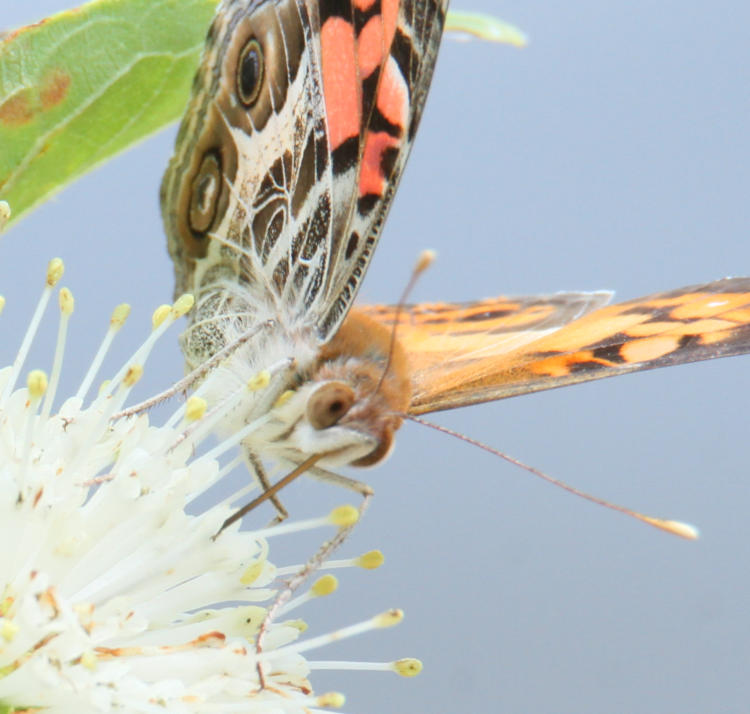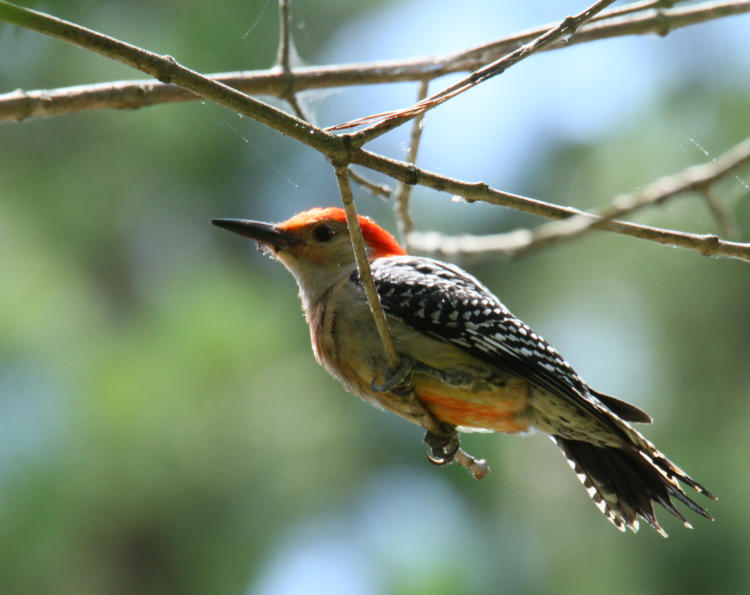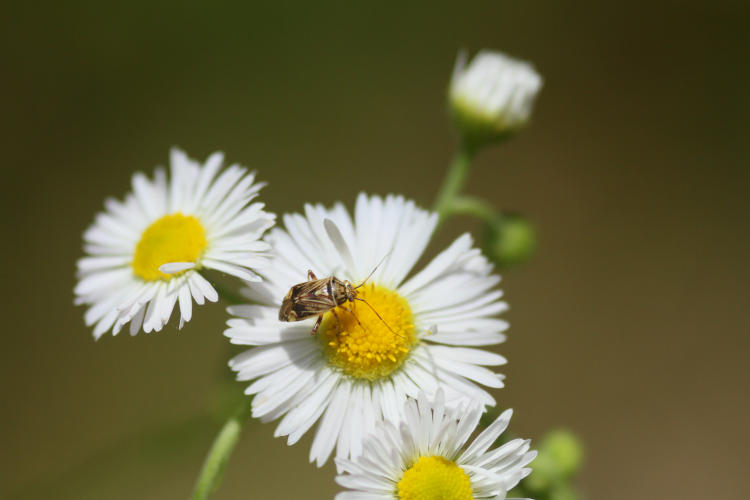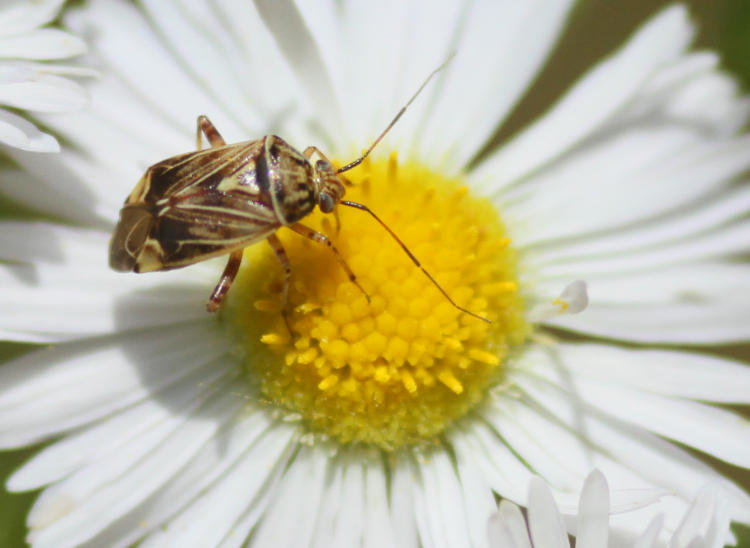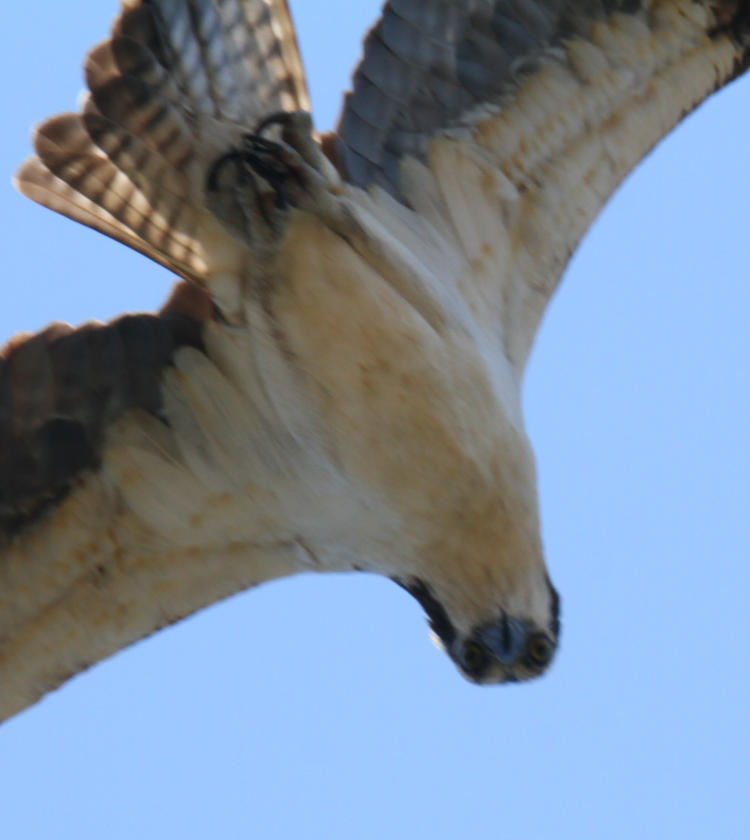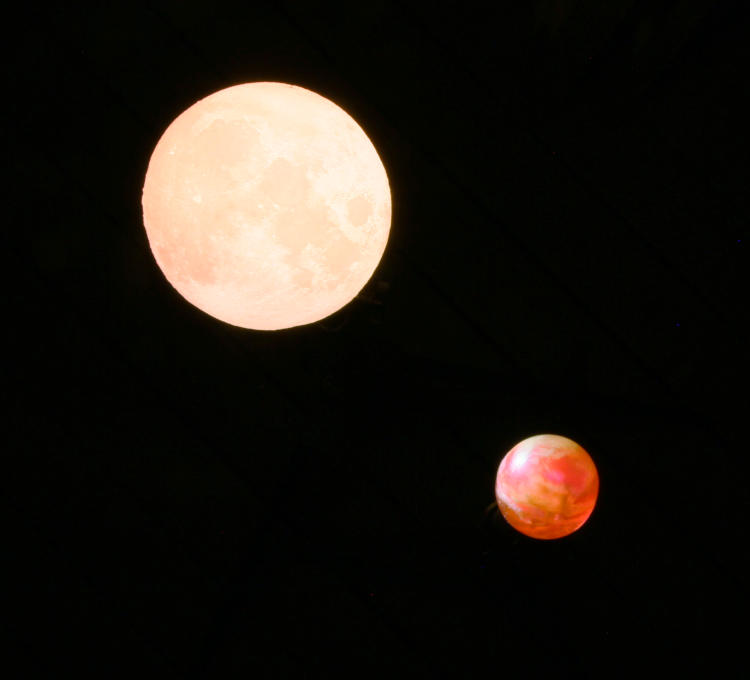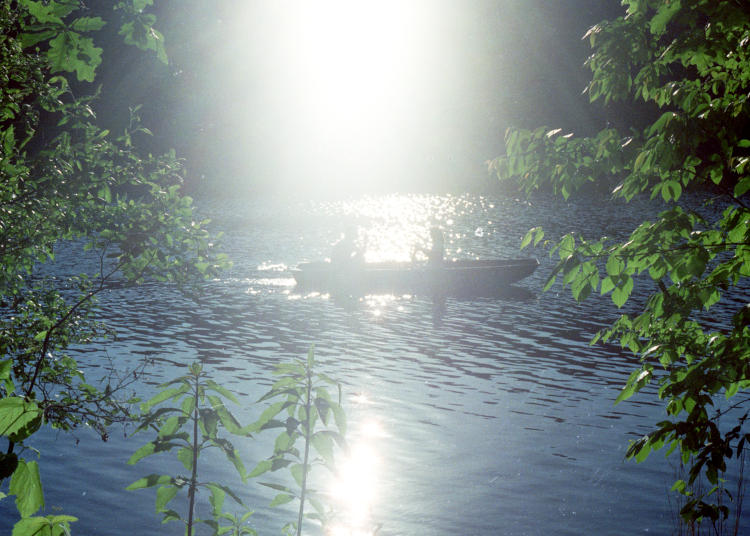I was out on the back deck firing up the grill tonight and checked out the various plants that share that space. One of the hydrangeas showed something grumpy (or at least, I’m wildly interpreting it that way.)

No, I’m not really expecting you to spot it easily at this distance, I just did this one for context, though it’s there if you look close. But even I was ‘closer’ than this when I spotted it, not to mention knowing to look closely because I’d seen it on the same bush a few days previously. That’s a clue, if you know your species, because a) it’s daylight, and b) this says the species tends to return to the same general location.
I’m going to take up more space so you don’t jump to the next image too fast. You can see two other plants in the frame: a peach tree above and slightly right, though technically that’s not on the deck itself but the ground below it, and a small but wonderfully dense Japanese maple above to the left. That one in particular is less than a meter across, perhaps slightly shorter, and has the thickest canopy of any tree that I’ve seen. Itself, it may have harbored countless occupants that I could never spot, except that the leaves are too small to be comfortable for the species in question for this post.
Okay, we’ll go in closer now.
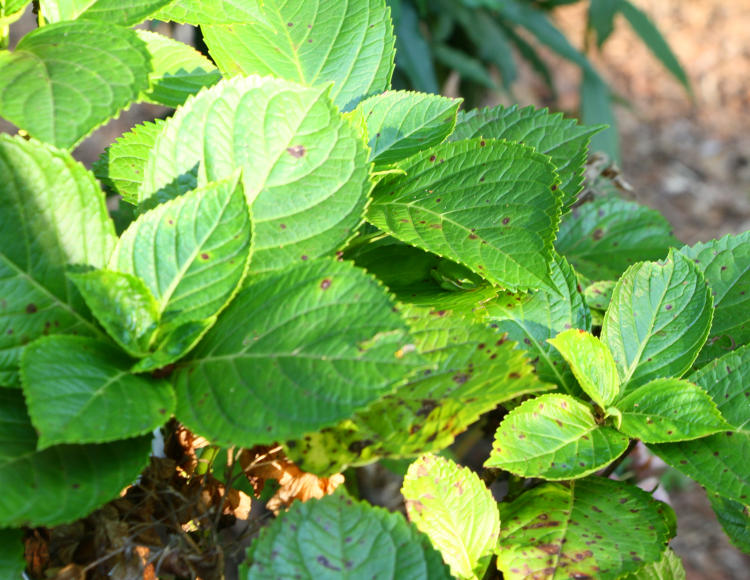
Shouldn’t be too hard now, though you can easily imagine that, were you not specifically looking for things of this nature, you could be standing right next to it and miss it entirely. Which is the goal, really – it’s why they have such coloration, and know to hold very still, though in many cases I suspect it’s simply because they can’t be bothered.
Closer yet.
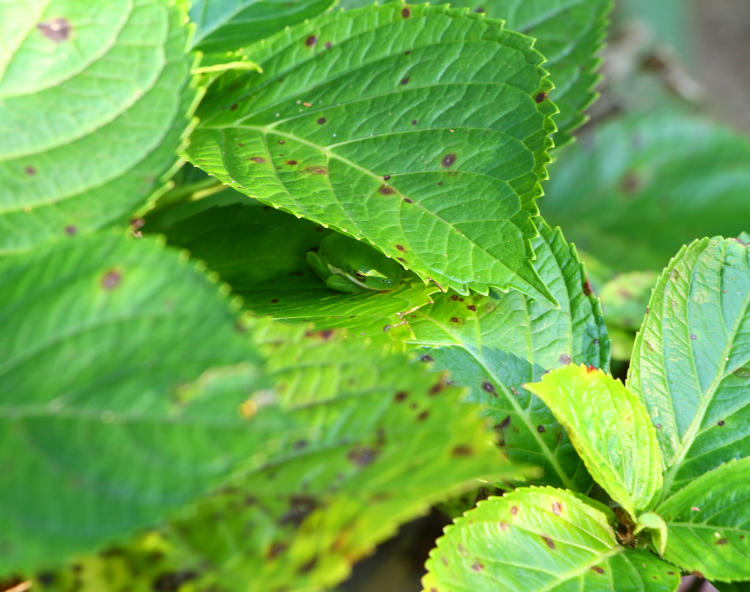
Okay, now you’ve surely seen the little green treefrog (Dryophytes cinereus) that was mostly sheltered from the sun during its daytime snooze. It was the early evening sunlight peeking through at just the right angle that made me get my camera, that kind of ‘slip through the cracks in the blinds’ form of sunlight that makes you realize how thin your eyelids really are. Too early to be awake, but unable to sleep in the glare, the treefrog was likely just sitting there stewing irritably. Or am I letting my imagination and anthropocentrism color things?

Aw, dammit, it’s going to tomorrow – gotta not do these so late at night. But I was also out getting some other images just a short while back, ones that belong in another post, so that will be along shortly too. Anyway, change ‘tonight’ to ‘last night’ because this posts after midnight… or will it?




















































